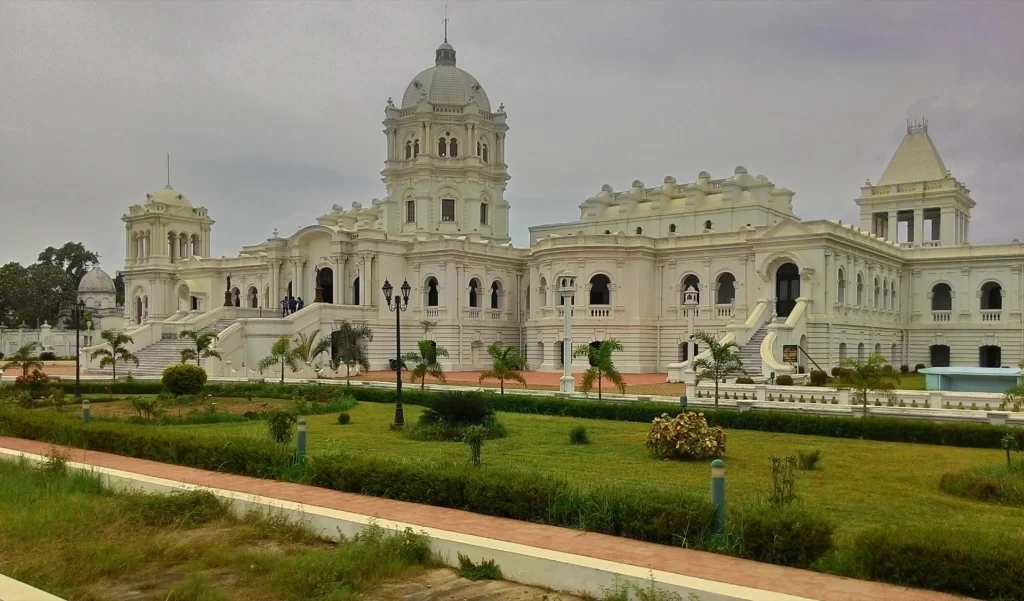Introduction:
Nestled in the northeastern part of India, Tripura stands adorned with architectural marvels that reflect the rich heritage of the Manikya dynasty. For centuries, this dynasty ruled over the region, leaving behind a remarkable legacy of splendid palaces and structures. In this article, we embark on a journey to explore the architectural gems of Tripura, delving into the historical significance and captivating beauty that they hold.
- Ujjayanta Palace: A Regal Splendor: The crown jewel of Tripura’s architectural heritage, Ujjayanta Palace, stands as a testament to the grandeur of the Manikya dynasty. This magnificent palace, located in the heart of Agartala, serves as the state’s legislative assembly today. Adorned with Mughal and British architectural influences, the palace showcases exquisite craftsmanship, sprawling gardens, and a stunning dome that adds to its regal allure.
- Neermahal Palace: The Water Palace: Nestled amidst the tranquil waters of Rudrasagar Lake, Neermahal Palace is a mesmerizing example of the fusion of Hindu and Islamic architectural styles. This water palace, often referred to as the “Lake Palace,” was the summer retreat of the Manikya kings. With its intricate carvings, arched doorways, and picturesque location, Neermahal Palace offers a glimpse into the opulent lifestyle of the royals while providing a serene setting for visitors.
- Kunjaban Palace: A Tranquil Retreat: Nestled amidst lush greenery, Kunjaban Palace served as the royal residence during the reign of the Manikya dynasty. Surrounded by sprawling gardens and adorned with ornate wooden carvings, this palace offers a serene and picturesque retreat. Today, it serves as the official residence of the Governor of Tripura and showcases the architectural finesse of the bygone era.
- Jampui Hill Range: Serenity Amidst the Clouds: While not a traditional palace, the Jampui Hill Range in Tripura deserves a special mention for its awe-inspiring landscapes and panoramic views. Perched at an altitude of around 1,000 meters, these hills offer a respite from the heat of the plains and enchant visitors with their serene ambiance. The hill range is dotted with small hamlets and picturesque viewpoints, making it a favorite destination for nature lovers and explorers seeking tranquility.
- Unakoti: Mystical Rock-Cut Sculptures: Unakoti, meaning “one less than a crore” in Bengali, is an ancient archaeological site renowned for its intricate rock-cut sculptures. Nestled amidst lush forests, these massive rock carvings depict various Hindu deities and mythological figures, showcasing exceptional artistic skills. With their mysterious charm and historical significance, the sculptures at Unakoti attract both devotees and art enthusiasts from around the world.
Conclusion:
Tripura’s architectural marvels offer a glimpse into the rich history and cultural heritage of the region. The grandeur of Ujjayanta Palace, the serenity of Neermahal Palace, and the tranquility of Kunjaban Palace embody the legacy of the Manikya dynasty. Additionally, the enchanting landscapes of Jampui Hill Range and the mystical rock-cut sculptures at Unakoti add to the allure of Tripura’s architectural treasures. These remarkable structures not only stand as a testament to the artistic and architectural prowess of the past but also provide a window into the royal heritage of Tripura, captivating visitors with their timeless beauty.


